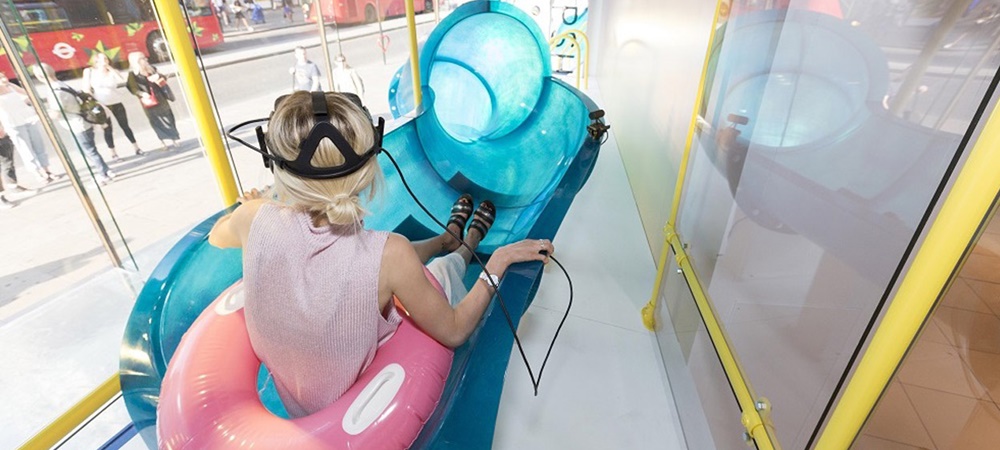Topshop has experimented with in-store experiences including a virtual reality slide.
Aussie retailers are under increasing pressure to compete with international brands and retail monoliths with deep pockets. In the fight to win market share, investing in experimental in-store experiences can help boost brand engagement and attract customers into your stores, says Julien Walon Cohen.
In our world today, every new thing—product or service—gets instant credit for being ‘cool’, and customers love associating themselves with the latest trend. Whether spread across social media or by word of mouth, these ‘new things’ attract attention and curiosity, and customers want to be among the first to try them out.
Retailers can leverage this by creating new, exciting experiences for their customers. However, most Aussie retailers who invest in experimental experiences approach them for short-term profit without taking into account customer loyalty and the ability to build sustainable business growth from the investment. If an in-store experiment is measured purely on immediate sales profits, the greater value of the investment may be overlooked.
Here are some practical tips for running in-store experiences.
1. Apply a lean, start-up methodology
Make sure your experimental goal is aligned with your management and company objectives and then break it down. Schedule milestones, deadlines and invite your peers and management to share results.
Important questions to ask include: Does the experiment have a clear purpose? Is the experiment achievable? How can we ensure reliable results? How will we get the most value out of the experiment? Are we applying the right metrics to measure success?
2. Focus on the customer
Be sure to design your experiments with the customer at the heart of your planning. Create events specifically with your customers in mind. Use your customer data to glean insights into their preferences, likes and dislikes and tailor experiences to meet your key demographics.
A good example of this is General Pant’s interactive kiosks, which create an entertaining and interactive shopping experience.
3. Leverage the experience across all channels
To get the most out of the experiment, don’t just focus on the in-store experience. Don’t exclude potential customers from an experience just because they can’t make it to one particular store. It’s a great opportunity to connect with your customers through direct email, mobile, on your social media platforms and expand your project to a seamless omnichannel experience.
You can also showcase images and stories from the experience across your social media platforms and build a mini branded site to support the buzz on your online store.
Aussie retailers can leverage in-store experimental experiences to stand out, innovate, improve convenience and boost customer experience. But the vision should extend beyond a short-term focus to delighting your customers and building loyalty, which is crucial to remain relevant and competitive.
Julien Walon Cohen is head of business development and partnerships, Fluent Commerce.

